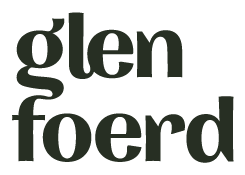Tabitha Arnold
Purefinder and Workshop of the World,2021
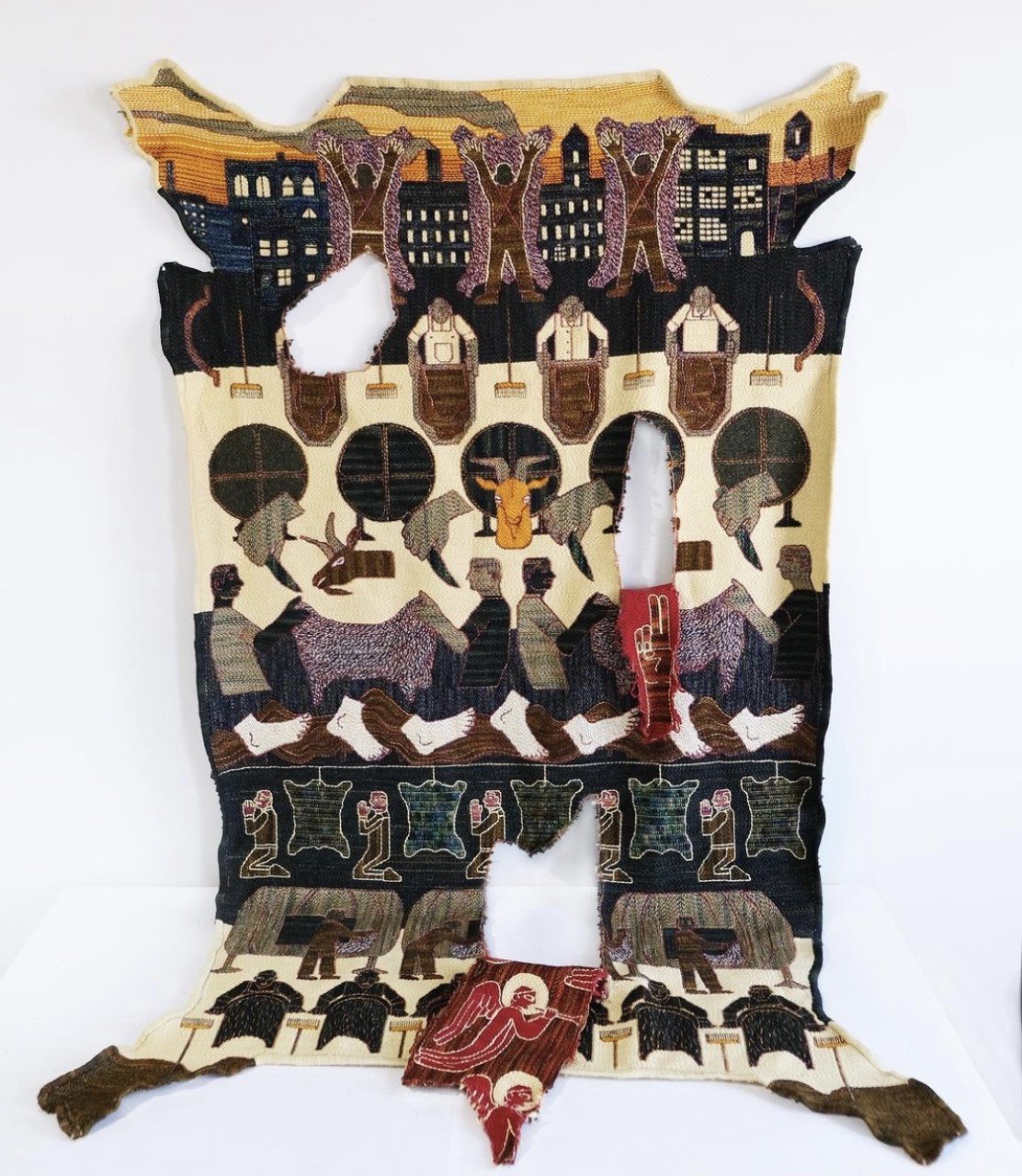
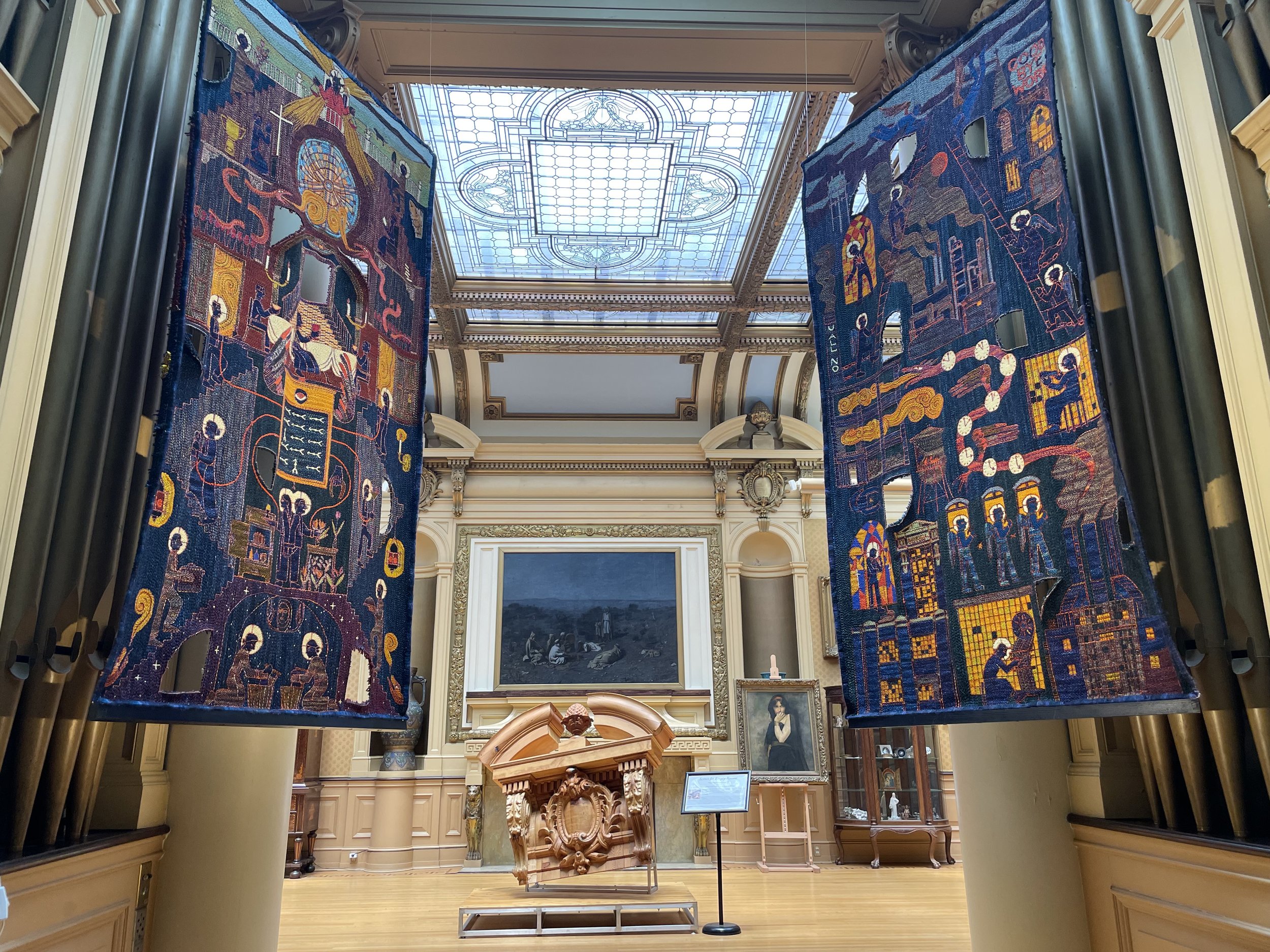
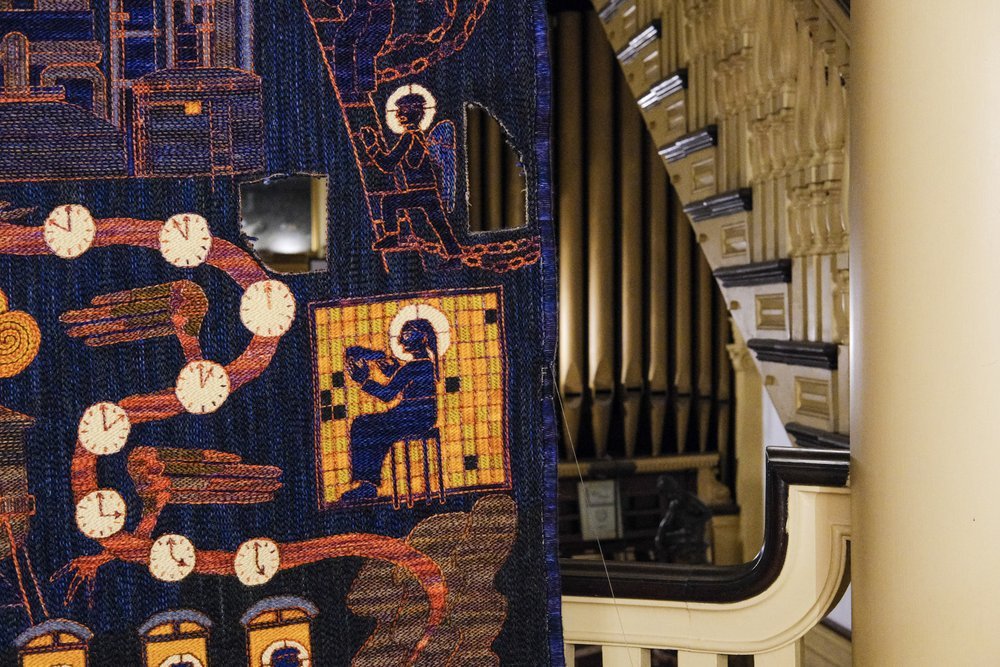
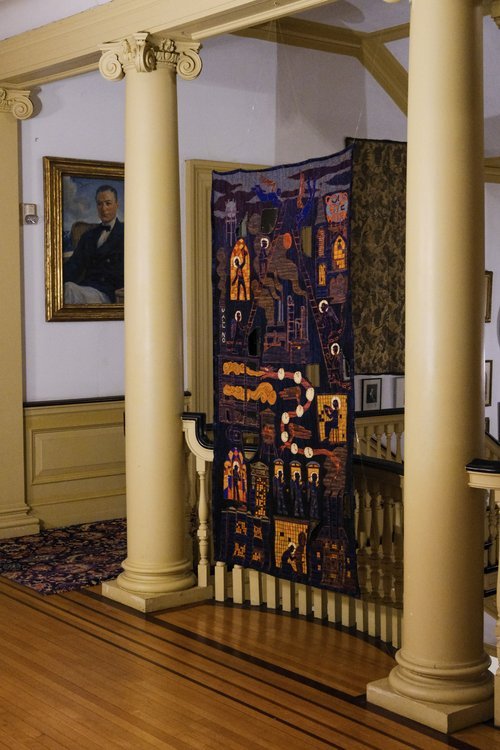
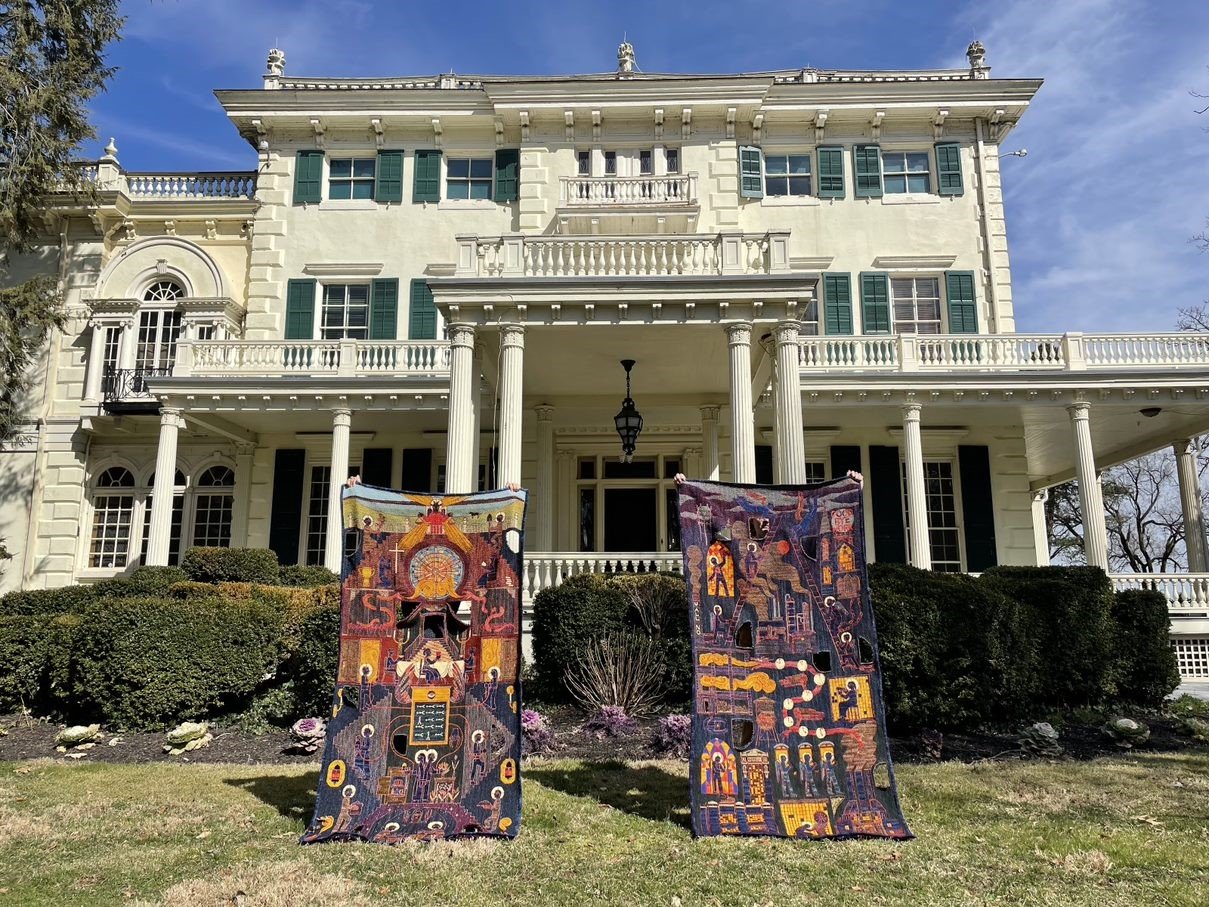
Pure Finder is a goat hide-shaped rug created for the prayer room at Glen Foerd. It depicts workers engaged in the long and strenuous process of refining leather at the Vici Kid factory, which was owned by the Foerderer family. The title refers to “pure finders,” who were workers that made a living searching for dog or pigeon feces, an essential ingredient in removing hair from hide and selling it to tanners.
The bloody underbelly of the piece curls forward from the wall, mimicking the contrast between the gilded Glen Foerd estate and the disgusting reality of the leatherwork that created it. Workers at the Vici Kid factory eventually went on strike to protest their awful work conditions.
Peering into the largest hole in the piece, you can read an original poem typed by Glen Foerd’s former owner Florence Foerderer Tonner. She writes about making a leather shoe, and though she surely never had to work in her family’s factory, she imagines this labor romantically and even a little wistfully. This sacrificial display of labor on Tonner’s personal altar encapsulates the vast inequalities of the American Gilded Age.
Workshop of the World is a diptych set of rugs inspired by Auguste Rodin’s Gates of Hell. One rug refers to the interior spaces of Glen Foerd, while the other depicts Northeast Philadelphia and the setting of the former Vici Kid leather factory. They hang as gates for visitors to pass through, with small cutouts that mimic the doors of the Polish Catholic church in Bridesburg. Most of the figures in the rugs are laborers. Referencing Eastern Orthodox icons such as the “Last Judgment,” the working-class characters bear halos and struggle upwards on a moral climb toward heaven. They dutifully act out a Protestant fetishization of labor that equates work ethic with redemption and godliness—but only for those whose class condition requires them to work in the first place.
The Glen Foerd interior rug shows workers laboring “below stairs” while their employers lounge above. Work-focused spaces like the basement, kitchen, servant stairs, and sleeping rooms show scenes of the various labor performed throughout the estate’s history. We know that Glen Foerd depended on many domestic staff in roles like Gardener, Butler, Governess, and Ladies Maid. The centrally located call box, which once rang when the Foerderers wanted to summon servants to different rooms, is linked by wire to each worker in the rug.
The exterior rug imagines Northeast Philadelphia's past and present, including buildings like the Vici Kid factory that no longer stand. The gridded warehouse window appears alongside stained-glass facades of historic churches, framing exalted laborers who once enjoyed the boom of factory work. Skilled textile manufacturing contrasts with the lowly work of the leather tanner, a job relegated to poor Polish immigrants. This piece also centers on the clock, which had a new and dramatic influence on workers’ lives in the Industrial Revolution.
